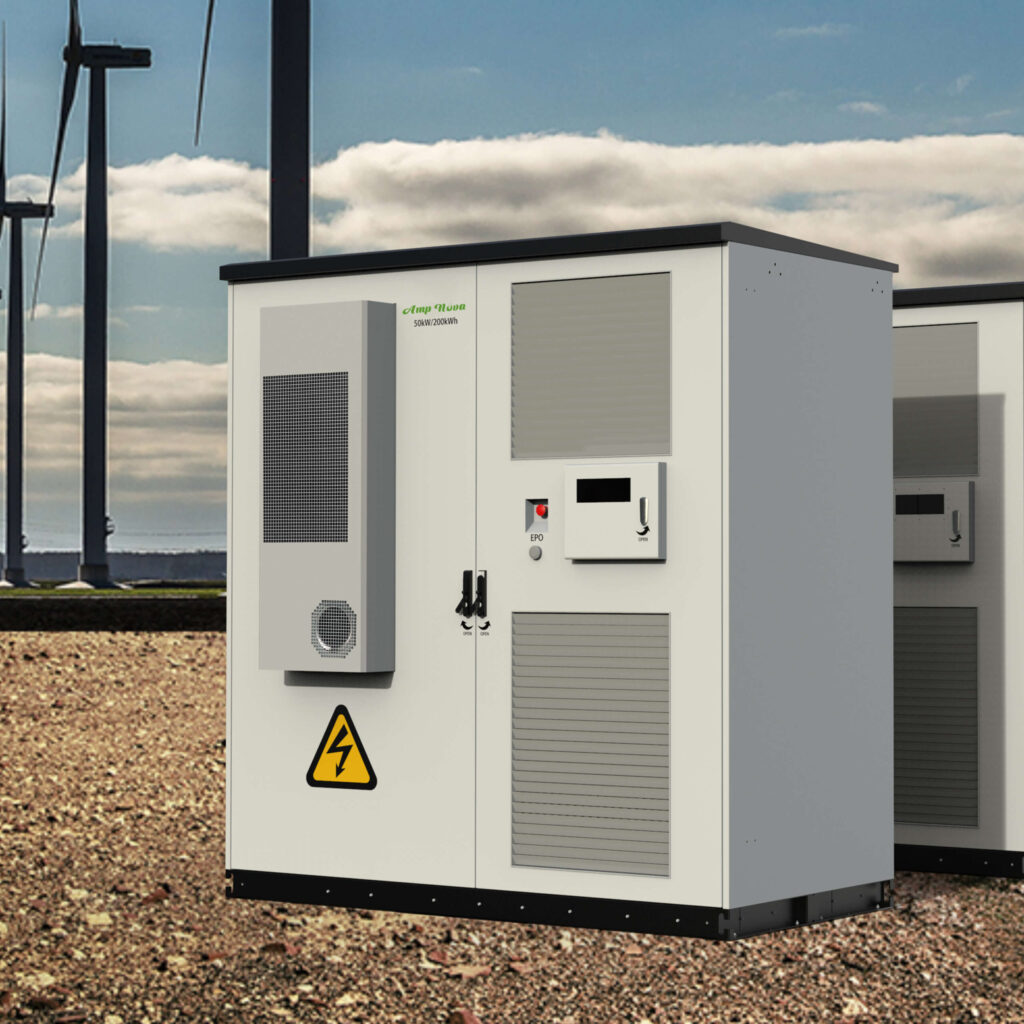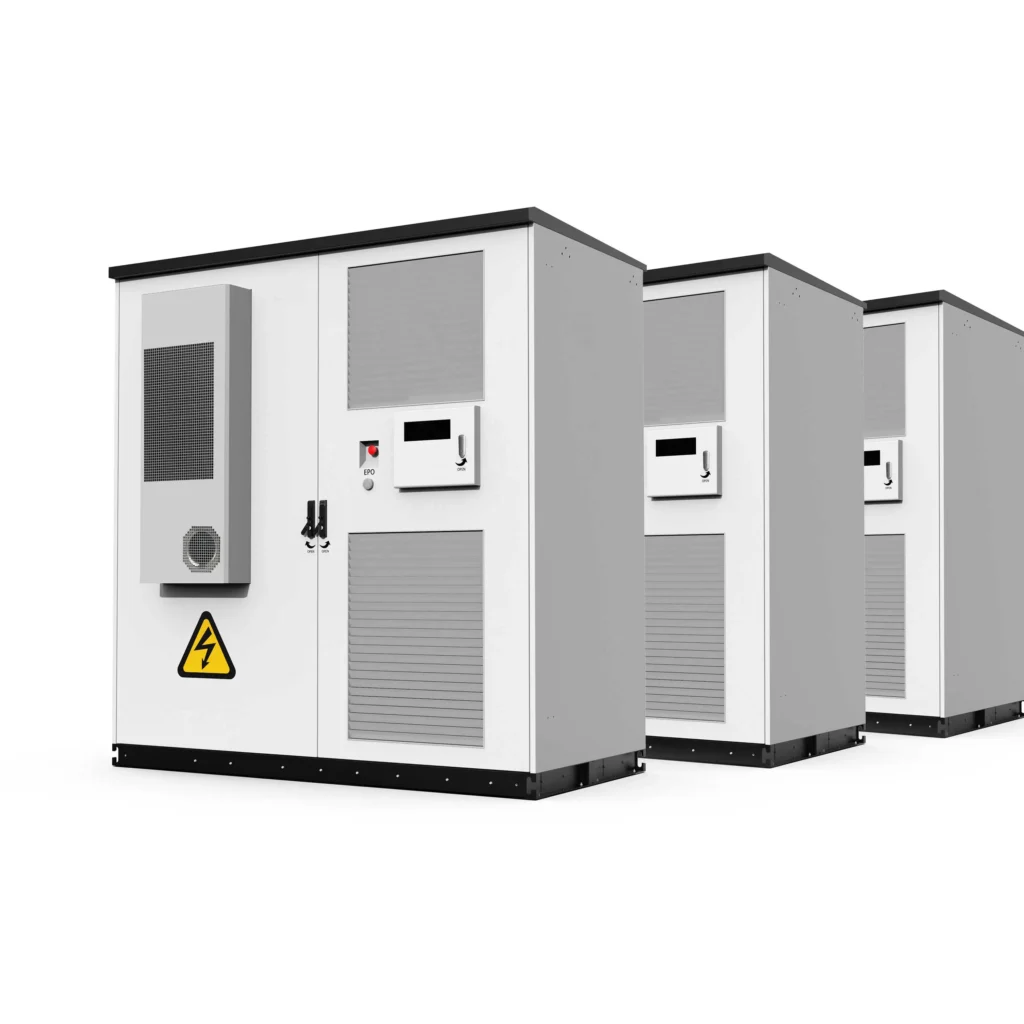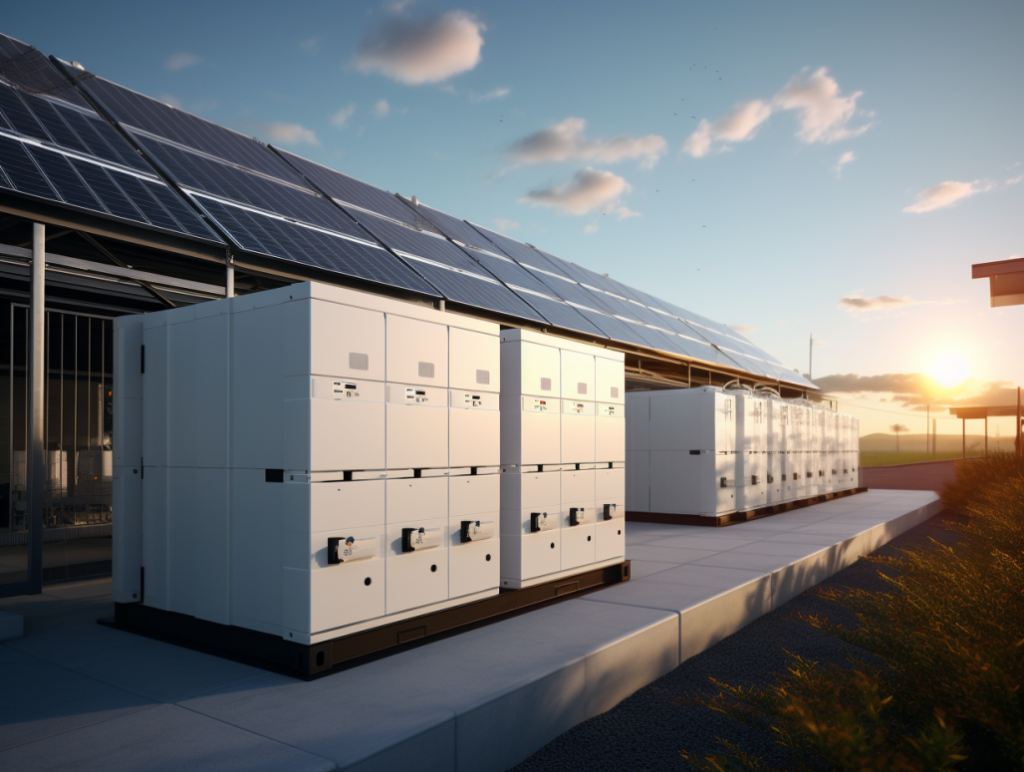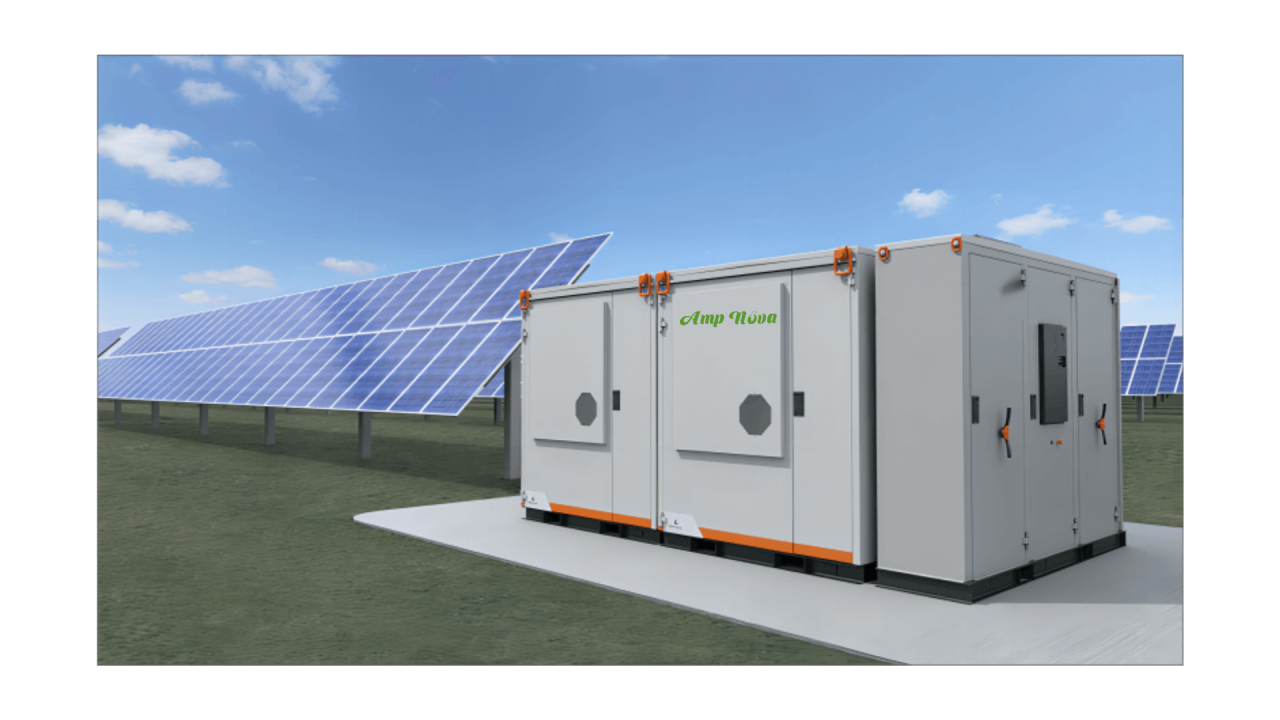Contents
- 1 Introduction to Energy Storage Systems
- 2 Key Benefits of Energy Storage Systems for Commercial Use
- 3 Increasing Energy Resilience and Security
- 4 Financial Savings and Return on Investment
- 5 Reducing Peak Demand Charges
- 6 Supporting Renewable Energy Integration
- 7 Enhancing Grid Stability and Reliability
- 8 How To Choose Commercial Energy Storage Systems?
- 9 Future Trends and Innovations in Energy Storage Systems
- 10 Conclusion
Introduction to Energy Storage Systems
Commercial Energy storage systems are crucial components of contemporary energy management solutions. They offer a way to store excess energy generated during peak production periods for later use during periods of high demand. These systems are designed to store energy in various forms, such as electrical, mechanical, or chemical, for later retrieval and utilization. By enabling the efficient capture and release of energy, they play a vital role in enhancing grid stability, optimizing renewable energy integration, and reducing energy costs for commercial facilities.

Key Points to Understand about Energy Storage Systems:
- Functionality: Energy storage systems store energy generated during periods of low demand for use when demand is high, thereby balancing the supply-demand equation.
- Types of Energy Storage: Common energy storage technologies include batteries, flywheels, compressed air energy storage, and thermal storage systems, each with its unique characteristics and applications.
- Benefits: Energy storage systems help improve energy resilience, reduce reliance on fossil fuels, mitigate peak demand charges, and facilitate the integration of renewable energy sources into the grid.
- Applications: These systems find applications in various sectors, including commercial buildings, renewable energy plants, industrial facilities, and utility-scale installations, providing flexibility and efficiency in energy management.
Understanding the fundamentals of energy storage systems is essential for businesses seeking to optimize their energy consumption, reduce costs, and contribute to a more sustainable future by effectively leveraging advanced energy storage technologies.
Key Benefits of Energy Storage Systems for Commercial Use
- Cost Savings: Energy storage systems can help commercial businesses save money by storing electricity during off-peak hours when rates are lower and using it during peak hours when rates are higher.
- Backup Power: In the event of a power outage, storage systems can provide a reliable backup power source, ensuring continuous operation of critical systems and equipment.
- Peak Demand Reduction: By storing excess energy during periods of low demand and using it during peak demand times, commercial businesses can reduce their overall electricity costs and avoid expensive peak demand charges.
- Renewable Integration: Energy storage systems facilitate the integration of renewable energy sources, such as solar or wind power, by storing excess energy produced during times of high generation for use when demand is high or generation is low.
- Grid Stability: Commercial energy storage systems can help improve grid stability by balancing supply and demand, reducing fluctuations, and supporting a more reliable and resilient energy system.
- Environmental Benefits: Energy storage systems can help commercial businesses reduce their carbon footprint and contribute to a more sustainable future by reducing reliance on fossil fuels and integrating renewable energy sources.

Increasing Energy Resilience and Security
- Energy storage systems can enhance energy resilience by providing backup power during grid outages or emergencies.
- By storing excess energy during off-peak hours, businesses can reduce their reliance on the grid during peak times, increasing energy security.
- The ability to island from the grid during emergencies or peak demand periods ensures a continuous power supply.
- Integrating renewable energy sources with energy storage systems can further enhance energy resilience by providing a reliable power source independent of the grid.
- Energy storage can also help businesses avoid costly downtime and revenue losses associated with power outages.
- Advanced energy storage technologies offer enhanced monitoring and control capabilities, further securing the energy supply.
“Commercial energy storage systems play a crucial role in increasing energy resilience and security for businesses.”
- By diversifying energy sources, companies can mitigate risks associated with grid instability or fossil fuel price fluctuations.
- Energy storage systems can provide a cost-effective solution for meeting peak demand without relying on expensive grid upgrades.
- Reducing dependency on the grid contributes to overall energy security by ensuring a reliable power supply during peak usage or emergencies.
Financial Savings and Return on Investment
When considering the implementation of commercial energy storage systems, it is essential to evaluate the potential financial savings and return on investment (ROI) that these systems can offer. Here are some key points to consider:
- Reduced Energy Costs: Commercial energy storage systems can help reduce energy costs by storing electricity during off-peak hours when rates are lower and using it during peak hours to avoid higher costs.
- Demand Charge Management: By using stored energy during times of high demand, businesses can reduce peak demand charges imposed by utility companies, leading to significant cost savings.
- Ancillary Service Revenue: Some commercial energy storage systems can provide ancillary services to the grid, allowing businesses to earn revenue by participating in programs such as demand response or frequency regulation.
- Tax Incentives and Rebates: Many governments offer tax incentives, rebates, or other financial incentives for the installation of storage systems, further lowering the upfront costs and improving the ROI.
- Long-Term Savings: While the initial investment in a commercial energy storage system may be significant, the long-term savings in energy costs and potential revenue streams can result in a substantial ROI over the system’s lifespan.
- Environmental Benefits: In addition to financial savings, commercial energy storage systems can also help businesses reduce their carbon footprint and demonstrate a commitment to sustainability, which can have positive impacts on brand reputation and customer loyalty.
In conclusion, evaluating the financial savings and ROI of commercial energy storage systems is crucial for businesses looking to enhance their energy efficiency, reduce costs, and create a more sustainable operation. By carefully analyzing these factors, businesses can make informed decisions about implementing energy storage technologies.
Reducing Peak Demand Charges
Commercial energy storage systems are crucial for reducing peak demand charges for businesses. By strategically using stored energy during peak demand periods, businesses can lower their peak demand levels and avoid costly charges from utility providers. These systems help in optimizing energy usage by storing excess energy during off-peak times and discharging it during peak hours. This strategy not only reduces peak demand charges but also enhances overall energy efficiency for commercial establishments.
Benefits of reducing peak demand charges with energy storage systems:
- Lower electricity bills by avoiding peak demand charges
- Enhanced energy cost savings and efficiency
- Increased control over energy consumption
- Improved reliability and resilience of the energy supply
- Contribution to a more sustainable energy usage pattern
Employing commercial energy storage systems is a proactive approach to managing energy costs and ensuring financial stability for businesses. By investing in these systems, businesses can mitigate the impact of peak demand charges and have more control over their energy consumption patterns. This ultimately leads to long-term cost savings and a more sustainable energy usage model.

Supporting Renewable Energy Integration
- Using commercial energy storage systems can help support renewable energy integration by storing excess energy generated by renewable sources such as solar or wind power.
- Energy storage systems can smooth out the intermittent nature of renewable energy sources, ensuring a more consistent power supply.
- By integrating storage systems with renewable energy sources, businesses can reduce their reliance on traditional fossil fuels, contributing to a more sustainable energy mix.
- These systems can also help manage peak demand periods more effectively by storing energy during off-peak times and releasing it during high-demand hours.
- Commercial energy storage solutions support the grid by providing ancillary services such as frequency regulation and voltage support.
- The flexibility provided by storage systems allows for better coordination of renewable energy production and consumption, improving overall grid stability.
- Energy storage systems enable businesses to participate in demand response programs, leveraging stored energy to reduce peak demand charges.
By supporting renewable energy integration, commercial energy storage systems play a crucial role in transitioning towards a cleaner and more sustainable energy future.
Enhancing Grid Stability and Reliability
Commercial energy storage systems play a crucial role in enhancing grid stability and reliability through various mechanisms:
- Peak Shaving: Implementing energy storage systems helps to mitigate peak load demands by storing excess energy during off-peak hours and supplying it during peak hours. This reduces strain on the grid, avoiding blackouts and enhancing overall stability.
- Frequency Regulation: Energy storage systems provide rapid response capabilities to regulate grid frequency. By injecting or absorbing power as needed, these systems help balance electricity supply and demand, ensuring grid stability under varying conditions.
- Voltage Support: Energy storage systems can offer voltage support by injecting reactive power when voltage levels drop, maintaining a stable grid voltage. This function is essential in areas with high renewable energy penetration where voltage fluctuations are common.
- Grid Resilience: During grid outages or disturbances, energy storage systems can provide backup power almost instantaneously. This improves grid resilience and reliability, reducing downtime for critical infrastructure and commercial facilities.
- Renewable Integration: Integration of energy storage systems with renewable energy sources facilitates smoother grid operation. Storing excess renewable energy and discharging it when needed helps balance intermittent generation, ensuring grid stability.
By incorporating commercial energy storage systems, grid operators can enhance stability and reliability while optimizing energy resources efficiently.
How To Choose Commercial Energy Storage Systems?
- Consider energy storage needs: Evaluate the energy consumption patterns of your commercial establishment to determine the required capacity of the energy storage system.
- Understand technology options: Research different types of energy storage technologies, such as lithium-ion batteries, flow batteries, or capacitors, to find the most suitable one for your specific needs.
- Assess available space: Consider the physical space available at your commercial property to install the energy storage system. Some systems may require more space than others.
- Evaluate cost: Compare the initial cost, maintenance requirements, and potential savings on energy bills associated with various commercial energy storage systems.
- Look for incentives: Research government incentives, rebates, or tax credits available to offset some of the costs of installing commercial energy storage systems.
- Consider scalability: Choose a system that can be easily expanded or upgraded in the future to accommodate growth or changes in energy needs within your commercial establishment.
- Consult with experts: Seek advice from energy consultants or manufacturers specializing in commercial energy storage systems to get professional recommendations based on your specific requirements.
- Check warranties and support: Review the warranties offered by different manufacturers and the level of customer support provided to ensure reliability and maintenance assistance when needed.
Future Trends and Innovations in Energy Storage Systems
- Li-ion Batteries:
- Advancements in lithium-ion batteries are expected to continue, leading to higher energy densities, longer lifespans, and lower costs.
- Research is focused on improving the performance and safety of these batteries for commercial energy storage applications.
- Solid-State Batteries:
- Solid-state batteries are a promising alternative to traditional Li-ion batteries as they offer higher energy densities, improved safety, and faster charging capabilities.
- Ongoing research aims to overcome manufacturing challenges and make solid-state batteries commercially viable for energy storage systems.
- Flow Batteries:
- Flow batteries have gained attention for their scalability and long cycle life, making them well-suited for large-scale energy storage applications.
- Innovations in flow battery technology focus on enhancing efficiency, reducing costs, and increasing energy storage capacity.
- Advanced Energy Storage Materials:
- Developments in advanced materials such as graphene, silicon, and nanomaterials show promise for improving the performance and efficiency of energy storage systems.
- Research efforts aim to leverage these materials to enhance energy storage capabilities and address the evolving needs of commercial applications.
- Grid-Interactive Technologies:
- Grid-interactive energy storage systems are being designed to provide grid services such as frequency regulation, peak shaving, and demand response.
- Future trends involve integrating advanced control algorithms and predictive analytics to optimize the operation of energy storage systems in accordance with grid requirements.
- Hybrid Energy Storage Systems:
- Combining different energy storage technologies, such as batteries, supercapacitors, and flywheels, in hybrid systems offers enhanced performance, efficiency, and reliability.
- The integration of multiple storage technologies is anticipated to improve overall system performance and cost-effectiveness for commercial energy storage applications.
Conclusion
Commercial energy storage systems are a crucial component of the modern energy landscape, offering numerous benefits to businesses and industries. These systems help reduce energy costs, increase energy efficiency, and provide backup power during grid outages. By integrating renewable energy sources with energy storage systems, businesses can further reduce their carbon footprint and contribute to a more sustainable future.
Choosing the right type of energy storage system requires careful consideration of factors such as energy needs, budget constraints, and available technology. Regular maintenance and monitoring are essential to ensure optimal performance and longevity of commercial energy storage systems. As technology advances and costs continue to decrease, the adoption of commercial energy storage systems is expected to grow rapidly in the coming years.
Businesses that invest in energy storage systems from Solar Battery Manufacturer today can enjoy long-term savings, improved reliability, and a competitive edge in an increasingly energy-conscious market. Implementing a commercial energy storage system is a strategic decision that can yield significant returns for businesses in terms of cost savings, energy efficiency, and environmental sustainability. By staying informed about the latest technologies and best practices, businesses can make well-informed decisions that align with their energy management goals. Get in touch!
